From Wild Madagascar Vanilla to Madagascar Bourbon Vanilla Beans
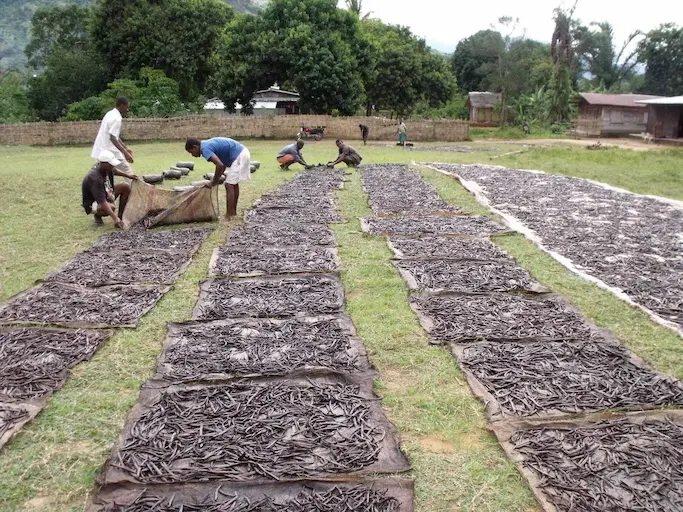
Curious about what makes Madagascar vanilla a star in the culinary world? You’re in the right place!
In this guide, we’ll walk you through the fascinating journey of a vanilla bean, from its humble beginnings as a flower in Madagascar to its transformation into a world-renowned spice.
Why does this matter? Because understanding the craft behind Madagascar’s vanilla helps us appreciate its unique flavor and quality.
History and Origin of Madagascar Bourbon
The Birth of the Bourbon Label
The term ‘Bourbon’ in vanilla doesn’t refer to quality but to a specific variety found in the Indian Ocean. Originating in 1964, the Bourbon label distinguishes vanilla from the Vanilla planifolia variety grown in the Indian Ocean from other types. This label has a rich history, tracing back to a young boy’s ingenious method of hand-pollinating vanilla on the island of Réunion.
Why the Bourbon Label?
Only a few places like Madagascar, Réunion Island (formerly known as Île Bourbon), Comoros, Mauritius, and Seychelles have the right to use the “Bourbon” label for their vanilla. This label ensures that you’re getting vanilla from a specific region and of a particular variety : vanilla planifolia .
The Artisanal Manufacturing Process of Madagascar wild Vanilla
The Unique Orchid
The vanilla plant is a special kind of orchid that grows as a hemi-epiphyte, meaning it relies on other plants for support. With vines that can stretch up to 20 meters long, it uses root-like grips at the base of its leaves to climb tree trunks.
The Delicate Art of Pollination
Vanilla flowers are incredibly fragile and bloom for just one morning per season. The planter must be on-site at the right time to pollinate the flower manually, a crucial step in producing the vanilla pod. However, not all flowers should be pollinated to avoid exhausting the plant and producing smaller pods.
The Journey of the Vanilla Pod
Did you know ?” It takes 6 to 7 kg of green vanilla to produce just 1 kg of black vanilla.”
Scalding: The First Step in Aroma Development
Before we even get to scalding, there’s a crucial preparation phase. Once the Madagascar wild vanilla pods are harvested, they undergo an initial sorting process. The technique varies depending on the processor; some keep the grape (vanilla vine), while others do not.
The pods are then sorted based on various factors:
- Size
- Maturity level (ripe or less ripe)
- Whether they are “melted” (fondues) or not
Each pod has its own optimal temperature for scalding, which is determined by these factors. This meticulous sorting ensures that each vanilla pod will be scalded at the temperature that’s just right for it, setting the stage for the development of its unique aroma.
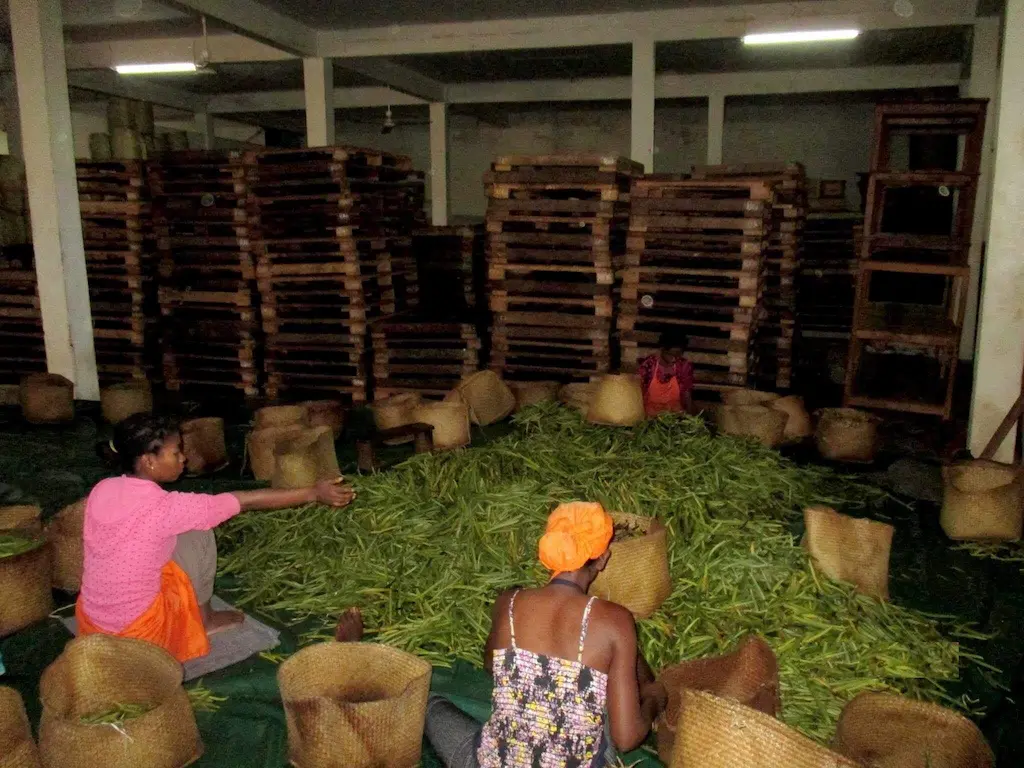
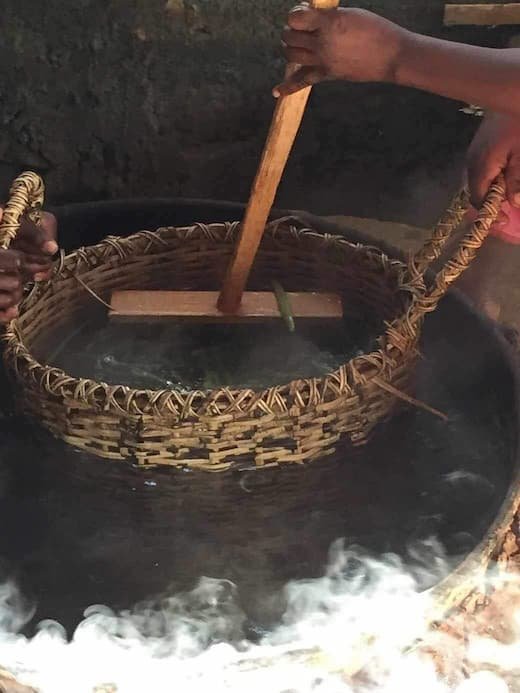
Scalding is a technique originally developed on the island of Réunion. It’s a crucial first step in the transformation of Madagascar Bourbon Vanilla Beans. Freshly harvested green vanilla pods are placed in wicker baskets, each holding about 25-30 kilos, and then boiled in water at 65°C for approximately 3 minutes.
Why Scalding?
Freshly harvested vanilla is rigid and can easily break. Scalding makes the Madagascar Bourbon vanilla beans more pliable. Moreover, this process serves to halt the vegetative growth of the vanilla pods, effectively stopping their maturation. It also triggers a chemical reaction that allows for the development of the bean’s unique aromas.
The water temperature for scalding can vary—55°C, 60°C, or 65°C depending on the quality of the vanilla determined during the initial sorting process.
Sweating: The Crucial Step for Madagascar Bourbon Vanilla bean
Immediately after scalding, the vanilla beans are placed into large wooden boxes lined with wool blankets to prevent heat loss. This stage, known as “sweating,” lasts between 24 and 72 hours and serves multiple purposes:
- Moisture Loss: The beans “sweat,” losing a significant portion of their moisture.
- Texture and Color: It’s during this stage that the beans become more pliable and take on their characteristic chocolate-brown color.
- Aroma Development: The enzymatic activities during the curing process transform glucovanillin into vanillin. This transformation is facilitated by a combination of enzyme activities involving cell wall degradation and glucovanillin hydrolysis. Understanding this enzymatic conversion is essential for appreciating the development of the bean’s unique aroma
For those keen on exceptional aroma, Grade A Vanilla Beans are unmatched
The beans must be placed in the boxes while still very hot, and the wool blanket is folded over to completely seal the box. This ensures that the beans stay warm for as long as possible, aiding in the sweating process.
Why Sweating?
Sweating allows the Madagascar Bourbon vanilla beans to achieve their beautiful brown silhouette and lose a significant amount of moisture, which is essential for aroma development. The duration of the sweating process in Madagascar is climate-dependent.
Sun and Shade Drying: The Art of Perfecting Bourbon Vanilla
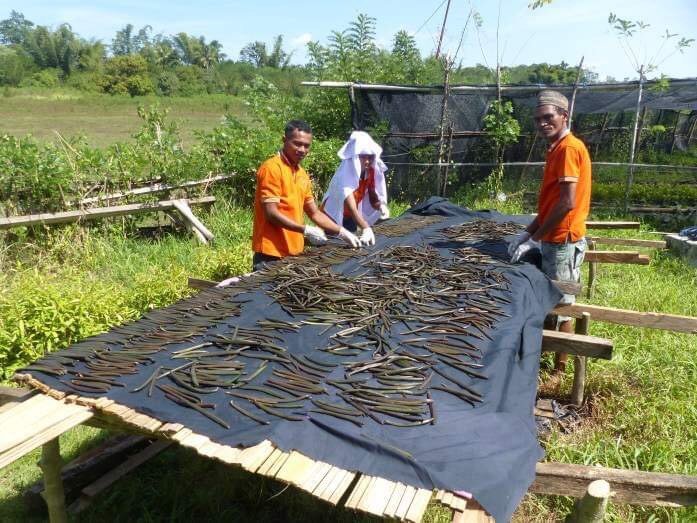
Sun Drying
After the sweating process, the vanilla beans are spread out in thin layers on racks or tables and exposed to the sun for 3 to 5 hours per day over a span of about ten days. Throughout this period, the beans are regularly turned to ensure even drying.
Post sun exposure, the beans are wrapped and stored away until the next day. It’s crucial that the beans do not dry out completely; they must retain some moisture for optimal aromatic transformation.
This stage also involves what’s known as “bean massaging,” a technique used to identify beans that still require more sun exposure.
Experience sun-dried vanilla in its most versatile form with our Vanilla Bean Powder.
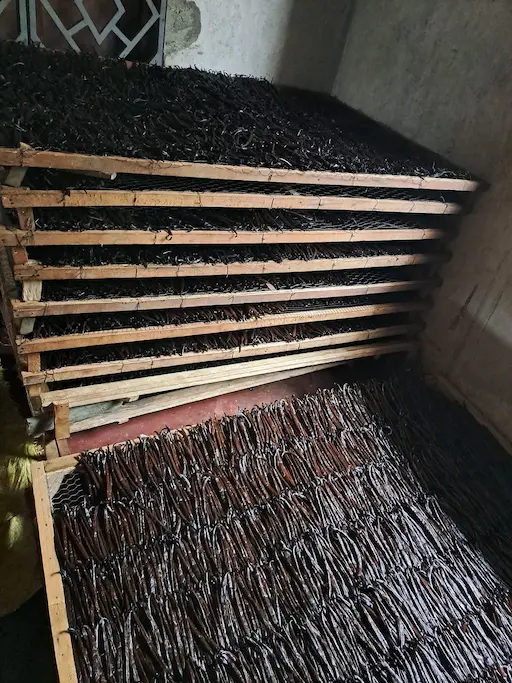
Shade Drying
Following the sun drying, the vanilla beans are then placed on well-ventilated racks.
Each day, they are turned and inspected. The farmer conducts daily sorting, removing those beans deemed dry enough to move on to the next stage.
This shade drying period can last between 1 to 2 months.
The meticulous attention to detail in both sun and shade drying ensures that each Madagascar Bourbon vanilla bean reaches its full aromatic and flavor potential, while also preventing mold formation.
Refining: The Culmination of Aroma for Madagascar Bourbon Vanilla Beans
The Refining Setup: La Mise en Malle
In this unique process known as “La Mise en Malle,” vanilla beans are carefully placed in wooden trunks lined with specialized papers. These papers serve a dual purpose: they protect the beans from external air and ward off mold.
The Long-Term Impact
The beans are regularly checked for aroma development and potential mold during the refining process, which can last up to a maximum of 8 months.
This extended period is essential for both intensifying and refining the bean’s unique aromas, setting the stage for their eventual classification and commercial sale.
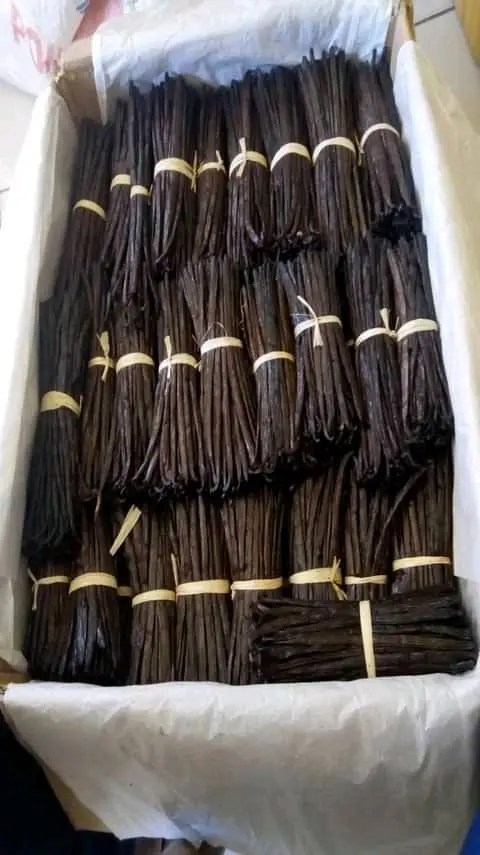
Sorting: A Crucial Step in Vanilla Quality Assurance
Sorting is an essential phase in the vanilla production process. It’s not merely a concluding step but a decisive stage that determines the quality and application of each bean.
Beyond Standard Grades
While grading provides a foundational understanding of vanilla quality, sorting takes into account additional factors like aroma profile, bean length, and visual quality. This ensures that each bean is allocated to its most suitable end-use.
For culinary applications that require subtler notes, consider our Grade B Vanilla Beans.
For a comprehensive understanding of vanilla bean grades, refer to our in-depth guide.
Madagascar vanilla : From orchid to your kitchen
It all starts with a fragile orchid flower, open for just one morning in Madagascar’s rich terrain. Skilled farmers take the stage next, hand-pollinating each bloom with care. The vanilla then matures on the vine for up to 8 months, under the watchful eyes of these experts.
After harvest, the wild Madagascar vanilla beans go through a series of artisanal steps—each demanding meticulous attention. From the initial scalding to the “La Mise en Malle” refining, every phase is a labor of love.
The final act is sorting, where each bean is evaluated for its unique attributes, ensuring that what lands in your kitchen is nothing short of exceptional.
This isn’t just a process; it’s a commitment involving the expertise of many. So the next time the rich aroma of Madagascar Bourbon vanilla elevates your cooking, remember the incredible journey it took to get there.
Explore our complete range of Madagascar Vanilla Beans for an immersive vanilla experience. Check out our complete product category.


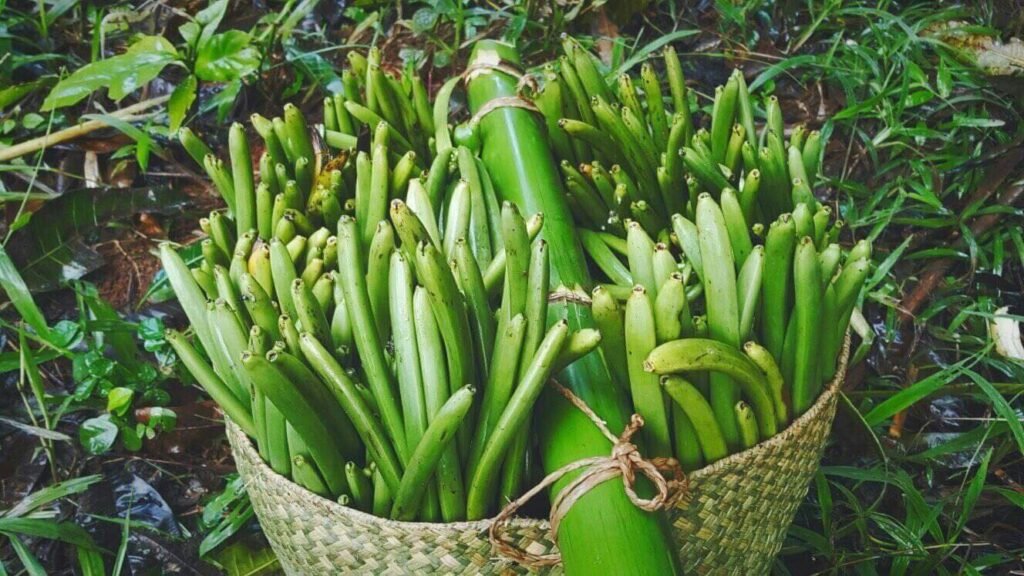
Pingback: Vanilla Bean Grades - Vanillanice.com | Madagascar Vanilla-7
Pingback: Natural Vanilla Flavor: Its Unique Aroma and Benefits